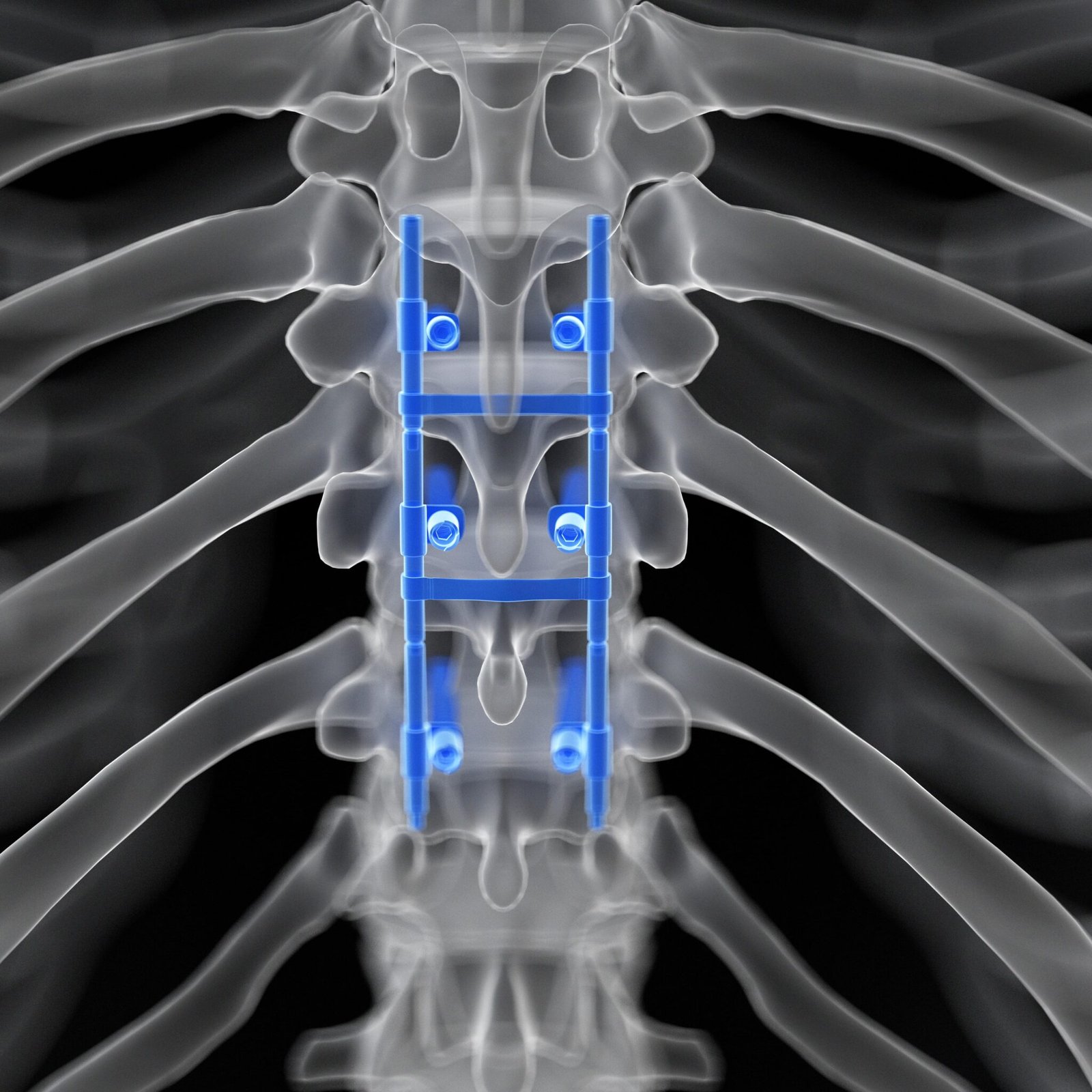Dr. Paresh Bang | Matruchhaya Spine Clinic
Meet Our Doctor
Dr. Paresh Bang
Consultant Spine Surgeon

Spine Fusion Surgery In Chandrapur

Spinal fusion surgery is a complex orthopedic procedure used to join two or more vertebrae in the spine to prevent movement between them. It is typically recommended for patients who suffer from severe back pain or spinal instability that has not responded to conservative treatments such as medications, physical therapy, or spinal injections.
Why Spinal Fusion is Done:
The surgery is used to treat a variety of spinal conditions, including:
- Degenerative Disc Disease: When the cushioning discs between vertebrae wear down, causing pain from bone rubbing against bone.
- Spinal Stenosis: Narrowing of the spinal canal that compresses nerves, leading to pain, numbness, and weakness in the limbs.
- Scoliosis: Abnormal lateral curvature of the spine.
- Spondylolisthesis: A condition where the vertebra slips forward over the vertebra below it.
- Fractures: Trauma, such as from accidents, that cause spinal instability.
- Infections or Tumors: Conditions that weaken or damage the spine.
How the Procedure Works:
Spinal fusion essentially “welds” together the problematic vertebrae so they heal into a single, solid bone, stopping movement between them and stabilizing the spine. Here’s an overview of how a surgery is performed:
- Bone Graft Placement: The surgeon uses a bone graft to stimulate bone growth between the vertebrae that need to be fused. Bone grafts can come from:
- The patient’s own body (autograft)
- A donor (allograft)
- Synthetic bone graft substitutes
- Instrumentation: To help the vertebrae fuse together, hardware such as metal rods, screws, or plates are used to hold the vertebrae in place while the graft heals.
- Surgical Approach: The surgeon may access the spine from:
- The front (anterior approach), through the abdomen.
- The back (posterior approach), through the muscles around the spine.
- The side (lateral approach), depending on the condition being treated.
Types of Spinal Fusion:
- Cervical Fusion: For the neck (cervical spine).
- Thoracic Fusion: For the mid-back (thoracic spine).
- Lumbar Fusion: For the lower back (lumbar spine).
Recovery Process:
- Hospital Stay: Typically, patients spend 2-4 days in the hospital, though this can vary depending on the complexity of the surgery.
- Pain Management: Medications are used to the manage pain after surgery.
- Physical Therapy: Rehabilitation is crucial for the successful recovery. Physical therapy helps to strengthen the muscles supporting the spine and improve mobility.
- Fusion Process: It can take several months to a year for the vertebrae to fully fuse. During this time, patients need to a avoid strenuous activities.
Risks and Complications:
Like any major surgery, spinal fusion comes with risks, including:
- Infection: As with any surgery, there’s the risk of infection.
- Bleeding: Excessive bleeding during and after the surgery.
- Nerve Injury: Nerves surrounding the surgical area may be damaged, causing numbness or weakness.
- Non-union: Sometimes the bone does not fuse properly, which might require additional surgery.
- Adjacent Segment Disease: Stress on adjacent vertebrae, which can lead to degeneration in nearby areas over time.
Benefits:
- Pain Relief: The primary goal of spinal fusion is to relieve chronic back and neck pain.
- Stabilization: It provides stability to a spine that is unstable due to conditions such as spondylolisthesis or fractures.
- Correction of Deformities: It can be used to correct spinal deformities like scoliosis.
Alternative Treatments:
Spinal fusion is typically recommended only when other treatments have failed. These alternatives might include:
- Physical therapy
- Anti-inflammatory medications
- Spinal injections
- Chiropractic care
How Spinal Fusion Works:
- Bone Grafting: The surgeon places a bone graft between the vertebrae that need to be fused. This graft may be from a patient’s own body (autograft) and a donor (allograft). Artificial graft materials are also used.
- Hardware: Screws, rods, or plates may be used to hold the vertebrae together while the bone heals and fuses the vertebrae over time.
- Recovery: Spinal fusion can take several months for the bones to a fully fuse. Physical therapy is often part of recovery to regain strength and flexibility.Contact Us
Why Spinal Fusion Surgery is Performed:
Spinal fusion is often recommended for a following conditions:
- Degenerative Disc Disease: When discs that act as cushions between vertebrae deteriorate, leading to pain and instability.
- Spinal Stenosis: A narrowing of the spinal canal that can compress nerves, causing pain, numbness, or weakness.
- Scoliosis and Kyphosis: Abnormal curvatures of a spine.
- Spondylolisthesis: A condition where one vertebra slips forward over the one below it, leading to pain and instability.
- Fractures: Vertebral fractures from trauma or osteoporosis that cause instability.
- Infections or Tumors: Infections or tumors that affect the spine and cause instability.Visit Our Hospital
